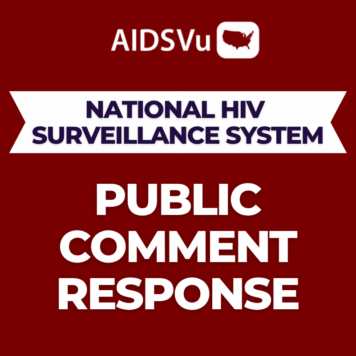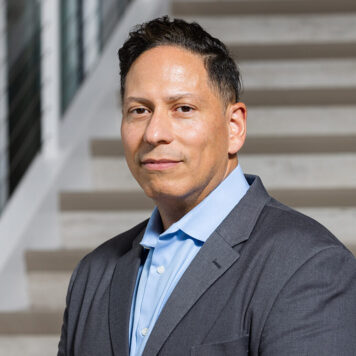Jen Hecht, MPH, Co-Founder and Director at Building Healthy Online Communities; Sr. Director, Program Strategy and Evaluation, San Francisco AIDS Foundation.
Q: You have been involved in public health for more than 20 years. What inspired you to work in this field and how has the HIV landscape changed over the last two decades?
When I started this work, I was involved in needle exchange and youth HIV prevention outreach. I was drawn to it because I felt that if people had the information and resources they needed, they could stay healthy. I was interested in work that addressed the complexity related to stigma about HIV and topics that a lot of people weren’t comfortable talking about, including drug use and sexually transmitted infections (STIs).
In the past two decades, I’ve seen the focus shift from education and behavioral change to biomedical intervention. I think that there are advantages and disadvantages to some of these changes. I can say the rise of improved HIV treatments and preventative measures like PrEP are major victories. However, I think we need to include behavioral interventions in our approach. While behavioral change is hard, some of our colleagues sometimes forget that taking a pill is also a behavior. I think a marriage of biomedical, behavioral, and structural interventions is what we need to make change happen.
I’ve been working on structural interventions for most of my career. I think people often associate structural interventions with policy change – work that I wholeheartedly support. But my work centers more around the changes we can make on a smaller scale. For example, one such project is making sure that dating apps have profile options that allow people to indicate that they’re undetectable or that they prefer using condoms. This is a small nudge that can have a larger impact. Once these changes are made, they are sustainable and engage people who might not otherwise access HIV prevention interventions.
I also worked with bars to ensure patrons have access to free water so that they can pace their alcohol intake throughout the night. I’m also a big fan of leveraging normative feedback to help the folks understand what their peers are doing and using that as a tool to move them toward choices that reduce harm. For example, this could be informing a group that many of their peers are getting tested regularly for HIV and STIs. This awareness can help normalize testing and encourages others to do so as well.
Q: You are a co-founder of Building Healthy Online Communities (BHOC), a consortium of public health and app owners working together to further HIV and STI prevention. What are some of BHOC’s HIV-related telehealth projects and how has the COVID-19 pandemic impacted or emphasized how BHOC communicates about the importance of testing and sexual health strategies?
One project that I have really enjoyed working on is TellYourPartner.org. Essentially, we built this site to enable people who’ve recently tested positive for an STI to anonymously let their partners know that they may have been exposed and should get a test. This came from our desire to work with the apps to enable in-app partner notifications. However, our app partners weren’t quite ready to use the in-app notifications, but they were willing to link out to an external site. Which several of them are now doing, including Grindr, Adam4Adam, and DaddyHunt.
I think Tell Your Partner is an example of a site that is focused on making sure that communication happens, and in turn, testing. We are trying to make it as easy and user friendly as possible.
Amid COVID-19, several quite different projects have happened. We’ve worked very closely with many of these dating apps to help align their messaging during the pandemic. Many of them struggled with how they should navigate communicating the message of sex around COVID-19 to their users. We worked on developing some resources for these apps so they could quickly reach their users. I think they were trying to make sure that they were messaging important and accurate information to their users. Some of which were certainly borrowed, with permission, from our partners in New York City who were the first to release guidance around harm reduction-related to sex and COVID-19.
Another project that happened somewhat unexpectedly was as a result of the work we had done with TellYourPartner.org. A number of colleagues reached out and asked if we could adapt it for COVID-19. We ended up deciding that we needed to create a parallel website, which is called TellYourContacts.org. This new tool has enabled folks who have tested positive for COVID-19 to notify their contacts about the fact that they may have been exposed. Luckily, this site used the same basic format and technology with a few adjustments to the layout and messaging.
Q: What is the Take Me Home project and how is the project being used to continue testing individuals for HIV during social distancing?
Take Me Home is a national self-testing program that’s now available through most of the major dating apps, including Grindr, Adam4Adam, SCRUFF, and Jack’d. Throughout the project, we worked with Emory University to do formative research with Men who have Sex with Men (MSM) app users. In the development of this project, we asked about a number of different sexual health features that the apps might add, and we found that home testing was something users were very supportive of. We then looked at what proportion of users of gay dating apps have had a recent HIV test and found that 22% of users on these apps had never been tested for HIV. Moreover, this percentage was even higher among younger users and users in rural areas and the South. These numbers showed us there was a real need and opportunity here.
This project was very much focused on partnering with the apps to identify folks who had either never tested or hadn’t tested recently. With these users identified, we created a platform for ordering HIV test kits geared towards those who have yet to be tested. This essentially means making it as easy as possible to order a test and then partnering with the apps to help reach folks who might not otherwise get these public health messages. This project helps overcome barriers to testing that might include discomfort testing in a doctor’s office or a community health clinic.
Additionally, our partnership with NASTAD has been an essential piece of the project. NASTAD has helped us create a mechanism to pay for these tests. States, county, and local health departments can sign up through Take Me Home to make tests available in their area. NASTAD oversees our contracts with our testing supplier and fulfillment vendor and works with each of those jurisdictions to enable payments for those tests. Finally, we work with each participating health department to be able to share specific local resources for their area participants. This helps users find additional resources including STI testing, PrEP services, and linkage to care specific to their areas.
I want to speak directly to providers who maybe are not as familiar with self-testing and just point out a couple of things to think about. First, the tests that we’re offering through Take Me Home are available in pharmacies and online across the country. They’re already available and people can get them whether or not a health department chooses to participate in this program.
Additionally, I’ve heard providers say that they’re worried about people taking the test by themselves. In this case, it’s helpful to remember that we’re trying to reach people who, for whatever reason, aren’t going into the clinic. Participants, as a part of our feedback process, have said they appreciate being able to do the tests in the privacy of their homes.
There are also additional resources that are included within the testing kits. The OraQuick kit includes a video that walks folks through the whole process from beginning to end. There is a 24/7 hotline, for those who feel like they are anxious or want information about other services. Finally, we are excited that in the next few months, we’ll be rolling out more comprehensive STI testing and PrEP panels.
Q: How can we work to expand testing this year as COVID-19 continues to impact the U.S.?
I’ve noticed in my conversations with health departments around the country that in some cases, the COVID-19 pandemic has created opportunities for them to start new programs. In other cases, it has been an impediment because the epidemic has limited the resources available to local health departments.
In my experience, the biggest barrier to testing is this very arcane process that health departments have to go through to get contracts in place. Some departments have said that they can’t spend more than a certain amount of money or that they need to have a memorandum of understanding (MoU). Others have to have a contract or a purchase order – it is just a challenging process of procurement and contracts. From what I have heard, these varied requirements have been the single biggest barrier.
Q: HIV Testing day is June 27th. What would be your message to individuals at risk for HIV across the country on this HIV Testing Day?
If you’ve never been tested before, there are many options out there for you. You can get a test in a community clinic, a doctor’s office, and in many cases, you can order a test to come in the mail. All of those options come with support services, whether it’s a counselor to talk to, a website to answer your questions, or even a video that will walk you through the process. Support is there – if you want it




